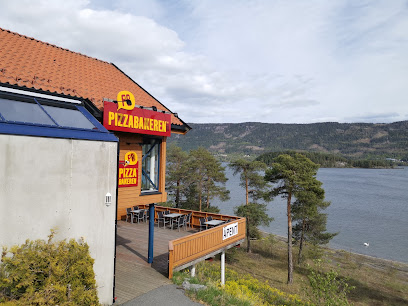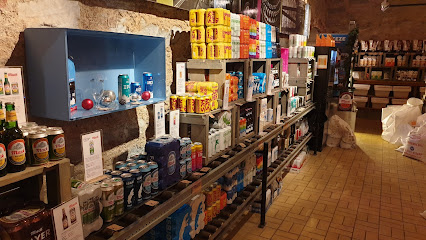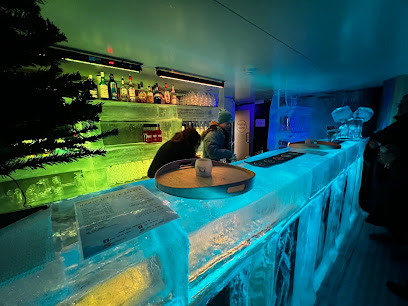
The Arctic Wonderland of Svalbard, Norway
Discover Svalbard, Norway's Arctic jewel – a land of glaciers, wildlife, and endless adventures under the midnight sun and the mesmerizing Northern Lights.
Svalbard, an archipelago situated in the Arctic Ocean, is a land of dramatic landscapes and endless daylight during the summer months. This remote destination is home to stunning glaciers, rugged mountains, and a unique array of wildlife, including polar bears, reindeer, and arctic foxes. Visitors to Svalbard can experience the breathtaking beauty of the polar environment while exploring its untouched wilderness. A journey to Svalbard offers numerous activities for adventure seekers and nature lovers. During the summer, the midnight sun provides ample opportunity for hiking, kayaking, and wildlife safaris. In winter, the landscape transforms into a snowy wonderland perfect for snowmobiling, dog sledding, and witnessing the magical Northern Lights. The small town of Longyearbyen, Svalbard's administrative center, serves as a hub for these adventurous excursions. Aside from its natural beauty, Svalbard also has a rich history linked to polar exploration and whaling. The Svalbard Museum in Longyearbyen provides fascinating insights into the archipelago's past. Despite its remote location, Svalbard is accessible by air, making it a unique and unforgettable destination for those seeking to experience the true essence of the Arctic.
Local tips in Svalbard
- Pack warm clothing in layers, as the weather can be unpredictable and temperatures can drop quickly.
- Join guided tours for activities like snowmobiling and wildlife safaris to ensure safety and maximize your experience.
- Respect local wildlife by maintaining a safe distance, especially from polar bears, which can be dangerous.
- Visit during the summer for the midnight sun and during winter for the Northern Lights to experience the best of both seasons.
- Consider travel insurance that covers extreme activities and remote locations.
The Arctic Wonderland of Svalbard, Norway
Svalbard, an archipelago situated in the Arctic Ocean, is a land of dramatic landscapes and endless daylight during the summer months. This remote destination is home to stunning glaciers, rugged mountains, and a unique array of wildlife, including polar bears, reindeer, and arctic foxes. Visitors to Svalbard can experience the breathtaking beauty of the polar environment while exploring its untouched wilderness. A journey to Svalbard offers numerous activities for adventure seekers and nature lovers. During the summer, the midnight sun provides ample opportunity for hiking, kayaking, and wildlife safaris. In winter, the landscape transforms into a snowy wonderland perfect for snowmobiling, dog sledding, and witnessing the magical Northern Lights. The small town of Longyearbyen, Svalbard's administrative center, serves as a hub for these adventurous excursions. Aside from its natural beauty, Svalbard also has a rich history linked to polar exploration and whaling. The Svalbard Museum in Longyearbyen provides fascinating insights into the archipelago's past. Despite its remote location, Svalbard is accessible by air, making it a unique and unforgettable destination for those seeking to experience the true essence of the Arctic.
When is the best time to go to Svalbard?
Unmissable attractions to see
Polaria aquarium
Discover the magic of the Arctic at Polaria, Tromsø's premier aquarium showcasing marine life and environmental education.

The Polar Museum
Discover the captivating stories of Arctic exploration at The Polar Museum in Tromsø, Norway - a journey through history awaits.

Fetsund Booms
Explore Fetsund Booms, an iconic Norwegian historical landmark and national museum showcasing the timber industry's heritage along the scenic Glomma River.

Kvalvika Beach Trail Head
Experience the natural beauty of Kvalvika Beach Trail Head in Lofoten, a perfect destination for hikers and nature lovers in Norway.

Steilneset Memorial Site
Explore the Steilneset Memorial Site, a poignant tribute to the victims of witch trials, set against the stunning backdrop of Vardo's coastline.

Ishavsmuseet Aarvak
Explore the maritime heritage of the Arctic at Ishavsmuseet Aarvak, a culturally rich museum in Brandal, Norway, surrounded by breathtaking fjord views.

Forollhogna National Park
Explore the breathtaking landscapes and diverse wildlife of Forollhogna National Park, the perfect destination for nature lovers and adventure seekers in Norway.

Gol Stavkyrkje
Explore the cultural heritage of Norway at Gol Stavkyrkje, a stunning stave church showcasing exquisite architecture and historical significance.

Slogen
Discover the breathtaking beauty of Slogen, a majestic mountain peak in Norangsfjorden, perfect for hiking and scenic views of Norway's stunning landscapes.

Haldenkanalen Regionalpark
Discover the enchanting landscapes and rich history of Haldenkanalen Regionalpark, a serene escape into Norway's natural beauty.

Ankerlia
Discover the rich history and breathtaking beauty of Birtavarre at Ankerlia, a captivating museum that brings the past to life.

Svinøy fyr
Experience the beauty and history of Svinøy Fyr, a magnificent lighthouse on the stunning Norwegian coast, surrounded by breathtaking landscapes.

Svalbard Expressen
Experience the thrill of Svalbard Expressen, a roller coaster adventure set in the scenic beauty of Ålgård, Norway.

Utøya Memorial
Explore Utøya Memorial, a serene tribute in Norway dedicated to remembrance, resilience, and the pursuit of peace amidst stunning natural beauty.

Essential places to dine
McDonald's Elverum
Experience fast food comfort at McDonald's Elverum – perfect for families and travelers seeking delicious meals on-the-go.

Sorrisniva
Discover unparalleled luxury at Sorrisniva in Alta—your gateway to fine dining and thrilling outdoor adventures in Norway's stunning wilderness.

ABC Thai Restaurant
Experience the vibrant flavors of Thailand at ABC Thai Restaurant in Vardø – where delicious meets affordable dining!

Restaurant SÖL
Experience the essence of Nordic cuisine at Restaurant SÖL, where local flavors meet modern culinary artistry in Stavanger.

Tango restaurant
Indulge in Stavanger's finest culinary delights at Tango Restaurant – where exquisite flavors meet elegant dining.

Lyngen North
Discover Lyngen North: Where Gourmet Dining Meets Breathtaking Alpine Views in Norway's Majestic Landscape.

Re-naa
Discover culinary artistry at Re-naa in Stavanger – where exquisite flavors meet exceptional service in a fine dining experience.

Bacalao til Folket
Discover the rich flavors of Norwegian bacalao at Bacalao til Folket, nestled in Oslo's vibrant Barcode district.

Sabi Omakase
Experience exquisite fine dining at Sabi Omakase in Stavanger - where every dish tells a story through artful presentation and fresh ingredients.

Restaurant K2
Experience culinary excellence at Restaurant K2 in Stavanger – where local ingredients meet innovative cuisine.

Geita Restaurant
Discover exquisite flavors at Geita Restaurant in Oslo - where fine dining meets unique musical experiences.

Sabi Enso Omakase by Roger A. Joya
Savor exquisite sushi at Sabi Enso Omakase in Stavanger – a culinary gem offering an unforgettable omakase experience crafted by expert chefs.

Bravo
Experience culinary excellence at Bravo in Stavanger – where fresh ingredients meet innovative flavors in a welcoming atmosphere.

Pizzabakeren Vik
Discover Pizzabakeren Vik: where every slice tells a story of flavor and freshness in Røyse's vibrant culinary scene.

Ramme Fjordhotell
Discover Ramme Fjordhotell: Where Organic Dining Meets Natural Beauty in Hvitsten.

Markets, malls and hidden boutiques
City Nord
Discover the bustling City Nord shopping mall in Bodø, a premier destination for shopping, dining, and entertainment in Norway.

Norwegian Outlet Stavanger
Explore Norwegian Outlet Stavanger: A premier shopping destination in Ålgård blending fashion, local culture, and great dining options.

Rush trampoline park
Discover endless fun and excitement at Rush Trampoline Park in Stavanger, Norway - the ultimate indoor playground for families and thrill-seekers.

Fetsund Booms
Explore Fetsund Booms, a national museum and historical landmark that celebrates Norway's timber rafting heritage amidst beautiful landscapes.

Tromsø Outdoor AS
Explore the Arctic wilderness with Tromsø Outdoor AS - your go-to hub for outdoor activities and equipment rental in Tromsø, Norway.

Holmen Husky Lodge
Discover the thrill of dogsledding and cozy lodging in the stunning Arctic landscapes of Alta, Norway at Holmen Husky Lodge.

KIWI
Explore KIWI in Bergen: Your go-to supermarket for local flavors, fresh produce, and everyday essentials during your visit.

Outlet Jæren
Explore Outlet Jæren in Sandnes for stylish furniture and home decor that combines quality with affordability, perfect for every taste and budget.

Ishavsmuseet Aarvak
Explore the maritime heritage of the Arctic at Ishavsmuseet Aarvak, a unique cultural gem in Brandal, Norway.

Fjellsport.no
Fjellsport.no: Your ultimate outdoor sports store in Sandefjord, offering quality gear for hiking, climbing, skiing, and more in Norway's stunning landscapes.

Interstil Factory Outlet
Shop for stylish furniture and home goods at Interstil Factory Outlet in Klepp Stasjon, where quality meets affordability in a stunning Norwegian setting.

Milslukern
Explore the great outdoors with top-notch gear from Milslukern, the ultimate sporting goods store in Oslo for skiing, biking, running, and kayaking.

Jobb og Fritid AS
Discover top-quality sporting goods and outdoor gear at Jobb og Fritid AS in Tromsø, your gateway to unforgettable Norwegian adventures.

Kjeller 5
Discover the finest selection of local and international craft beers at Kjeller 5 in Tromsø, where every sip tells a story.

Lervik Ur - Offisiel Rolex forhandler
Discover timeless elegance at Lervik Ur, Norway's official Rolex dealer in Haugesund, showcasing a stunning collection of luxury watches.

Essential bars & hidden hideouts
Scandic Alta
Discover the perfect blend of comfort and adventure at Scandic Alta, your gateway to Northern Norway’s breathtaking landscapes.

Magic Ice Bar
Discover the enchanting Magic Ice Bar in Bergen, where artistic ice sculptures meet a unique drinking experience in a breathtaking atmosphere.

Havariet
Discover Havariet, a vibrant restaurant in Tønsberg offering authentic Norwegian cuisine in a cozy atmosphere, perfect for every traveler.

Magic Ice Bar Tromsø
Discover the enchanting Magic Ice Bar Tromsø, where stunning ice sculptures and vibrant cocktails create an unforgettable nightlife experience.

Bardøla Høyfjellshotell
Experience the charm and hospitality of Bardøla Høyfjellshotell, where modern comfort meets the stunning beauty of Norway's mountains.

Scandic Harstad
Experience the perfect blend of comfort and exquisite dining at Scandic Harstad, where local flavors meet stunning Norwegian landscapes.

Scandic Syv Søstre
Discover Scandic Syv Søstre in Sandnessjøen - where exquisite dining meets comfortable lodging amidst Norway's breathtaking landscapes.

Sorrisniva
Discover Sorrisniva, where luxury meets adventure in the heart of Norway's stunning Arctic landscapes, offering unforgettable experiences and fine dining.

Kampen Bistro
Discover the delights of Norwegian cuisine at Kampen Bistro, where cozy ambiance meets live music in the heart of Oslo's Gamle district.

Summit Bar
Experience Oslo's nightlife at the Summit Bar, where exquisite cocktails meet breathtaking views of the city skyline.

Schouskjelleren Mikrobryggeri
Experience the heart of Oslo's craft beer scene at Schouskjelleren Mikrobryggeri, where artisanal brews meet a vibrant atmosphere in Grünerløkka.

Restaurant SÖL
Experience the Best of Norwegian Cuisine at Restaurant SÖL - A Culinary Gem in Stavanger.

Scandic Vestfjord Lofoten
Discover the comfort of Scandic Vestfjord Lofoten, your gateway to the breathtaking beauty of the Lofoten Islands.

Scandic Vadsø
Discover the charm of Vadsø at Scandic Vadsø, your home away from home in Norway's breathtaking landscapes.

Tango restaurant
Experience the pinnacle of fine dining at Tango Restaurant in Stavanger, where exquisite flavors meet impeccable service in a charming atmosphere.

Local Phrases about Svalbard
-
- HelloHei
[hay] - GoodbyeHa det
[hah deh] - YesJa
[yah] - NoNei
[nay] - Please/You're welcomeVær så god
[vair soh good] - Thank youTakk
[tahk] - Excuse me/SorryUnnskyld
[oon-skyld] - How are you?Hvordan har du det?
[vor-dan har doo deh] - Fine. And you?Bra. Og du?
[bra oh doo] - Do you speak English?Snakker du engelsk?
[snak-ker doo eng-elsk] - I don't understandJeg forstår ikke
[yay for-stor eek-eh]
- HelloHei
-
- I'd like to see the menu, pleaseJeg vil gjerne se menyen, takk
[yay vil yern-eh seh men-yen tahk] - I don't eat meatJeg spiser ikke kjøtt
[yay spee-ser eek-eh shøt] - Cheers!Skål!
[skowl] - I would like to pay, pleaseJeg vil gjerne betale, takk
[yay vil yern-eh beh-tah-leh tahk]
- I'd like to see the menu, pleaseJeg vil gjerne se menyen, takk
-
- Help!Hjelp!
[yelp] - Go away!Gå bort!
[gow bort] - Call the Police!Ring politiet!
[ring po-lee-tee-et] - Call a doctor!Ring en lege!
[ring en leh-geh] - I'm lostJeg er tapt
[yay er tahpt] - I'm illJeg er syk
[yay er seek]
- Help!Hjelp!
-
- I'd like to buy...Jeg vil kjøpe...
[yay vil shø-peh] - I'm just lookingJeg bare ser
[yay bah-reh seh] - How much is it?Hvor mye koster det?
[vor myeh kost-er deh] - That's too expensiveDet er for dyrt
[deh er for deert] - Can you lower the price?Kan du senke prisen?
[kan doo sen-keh prees-en]
- I'd like to buy...Jeg vil kjøpe...
-
- What time is it?Hva er klokka?
[vah er klok-ah] - It's one o'clockKlokka er ett
[klok-ah er eht] - Half past (10)Halv ti
[halv tee] - MorningMorgen
[mor-gen] - AfternoonEttermiddag
[et-ter-meed-dag] - EveningKveld
[kvelld] - YesterdayI går
[ee gor] - TodayI dag
[ee dahg] - TomorrowI morgen
[ee mor-gen] - 1En
[ehn] - 2To
[too] - 3Tre
[treh] - 4Fire
[feer-eh] - 5Fem
[fem] - 6Seks
[seks] - 7Syv
[soov] - 8Åtte
[ot-teh] - 9Ni
[nee] - 10Ti
[tee]
- What time is it?Hva er klokka?
-
- Where's a/the...?Hvor er en/et...?
[vor er en/et] - What's the address?Hva er adressen?
[vah er ad-dress-en] - Can you show me (on the map)?Kan du vise meg (på kartet)?
[kan doo vee-seh meh (poh kart-et)] - When's the next (bus)?Når går neste (buss)?
[norr gor nest-eh (booss)] - A ticket (to ....)En billett (til ....)
[ehn bee-let (teel)]
- Where's a/the...?Hvor er en/et...?
History of Svalbard
-
Svalbard, an archipelago in the Arctic Ocean, was first discovered by the Dutch explorer Willem Barentsz in 1596. It was during his third expedition in search of the Northern Sea Route that Barentsz stumbled upon these remote islands. The discovery marked the beginning of Svalbard's documented history and set the stage for future explorations.
-
In the 17th and 18th centuries, Svalbard became a significant hub for whaling, primarily by Dutch, British, and Danish whalers. The rich whaling grounds around the archipelago attracted numerous expeditions, leading to the establishment of temporary whaling stations. This period saw intense competition and occasional conflict among different national fleets vying for the valuable whale oil and blubber.
-
The late 19th and early 20th centuries saw a shift in Svalbard's economic focus with the discovery of coal deposits. The first mining activities began in 1899, and by the early 20th century, several mining settlements, such as Longyearbyen, Barentsburg, and Sveagruva, were established. These settlements attracted workers from various countries, making Svalbard a melting pot of cultures.
-
The geopolitical importance of Svalbard was formalized with the signing of the Svalbard Treaty in 1920 in Paris. The treaty granted Norway sovereignty over the archipelago but allowed signatory nations to engage in commercial activities. This unique arrangement has shaped Svalbard's administrative and economic landscape, ensuring a degree of international presence and cooperation.
-
During World War II, Svalbard's strategic location made it a focal point for military operations. In 1941, Allied forces evacuated the archipelago and destroyed its mining infrastructure to prevent German occupation. Despite these efforts, German forces established weather stations on Svalbard, leading to several skirmishes and sabotage missions throughout the war.
-
In the post-war era, Svalbard has emerged as a center for scientific research and environmental monitoring. The establishment of the University Centre in Svalbard (UNIS) in 1993 and the opening of the Svalbard Global Seed Vault in 2008 are testament to the archipelago's growing significance in polar research and global conservation efforts.
-
While Svalbard has no indigenous population, the archipelago's cultural tapestry has been enriched by the diverse communities that have settled there over the centuries. This includes Norwegian settlers, Russian miners, and international researchers, all contributing to a unique cultural heritage that reflects Svalbard's historical and contemporary significance.
Svalbard Essentials
-
Svalbard is an archipelago in the Arctic Ocean, situated about halfway between mainland Norway and the North Pole. The main gateway to Svalbard is through Longyearbyen, its largest settlement. You can get there by taking a flight to Svalbard Airport (LYR), which is accessible via regular flights from Oslo and Tromsø. There are no roads connecting Svalbard to mainland Norway, so flying is the only practical means of reaching the islands.
-
Within Svalbard, transportation options are limited. Longyearbyen is small and can be explored on foot. For longer distances, taxis are available, though they can be expensive. There are no public transportation systems like buses or trains. During the summer, boat tours offer access to other parts of the archipelago. Snowmobiles are a common mode of transport in winter, and guided tours often include these. Renting a car is an option, but keep in mind that driving beyond Longyearbyen is restricted without proper equipment and permission.
-
The official currency in Svalbard is the Norwegian Krone (NOK). Credit and debit cards are widely accepted in Longyearbyen, including in hotels, restaurants, and shops. There are ATMs available in Longyearbyen for cash withdrawals. It is advisable to carry some cash, especially if you plan to visit more remote areas or participate in certain tours that may not accept card payments.
-
Svalbard is generally safe for tourists, with very low crime rates. However, the Arctic environment poses its own set of challenges. Always be prepared for extreme weather conditions and carry appropriate clothing. Polar bears are a real danger; never venture outside the settlements without a guide and proper safety equipment. Longyearbyen itself is safe, but always exercise standard precautions such as not leaving valuables unattended.
-
In case of an emergency, dial 112 for immediate assistance. Longyearbyen has a hospital and a small police station. It is crucial to have travel insurance that covers medical emergencies and evacuation. If you are venturing into the wilderness, ensure you have the necessary safety equipment, including a satellite phone and a rifle for polar bear protection. Guided tours often include these safety measures.
-
Fashion: Do wear layered clothing appropriate for extreme cold. Avoid wearing cotton, as it retains moisture. Religion: There are no specific religious customs to be aware of, but always show respect in any place of worship. Public Transport: There is no public transport system, so do plan your travel arrangements in advance. Greetings: Do greet people with a smile or a nod. There is no formal greeting etiquette. Eating & Drinking: Do try local delicacies including Arctic char and reindeer. Don't litter, as the environment is extremely fragile.
-
To experience Svalbard like a local, visit the Svalbard Museum to learn about the history and culture of the archipelago. Engage with locals at pubs and cafes to hear fascinating stories about life in the Arctic. Don't miss out on the opportunity to see the Northern Lights in winter or the Midnight Sun in summer. For a unique experience, take part in a dog sledding tour or a snowmobile safari.
Nearby Cities to Svalbard
-
Things To Do in Bergen
-
Things To Do in Fredrikstad
-
Things To Do in Stavanger
-
Things To Do in Ålesund
-
Things To Do in Kristiansand
-
Things To Do in Molde
-
Things To Do in Karlstad
-
Things To Do in Skagen
-
Things To Do in Trondheim
-
Things To Do in Frederikshavn
-
Things To Do in Gothenburg
-
Things To Do in Aalborg
-
Things To Do in Örebro
-
Things To Do in Jönköping
-
Things To Do in Östersund












